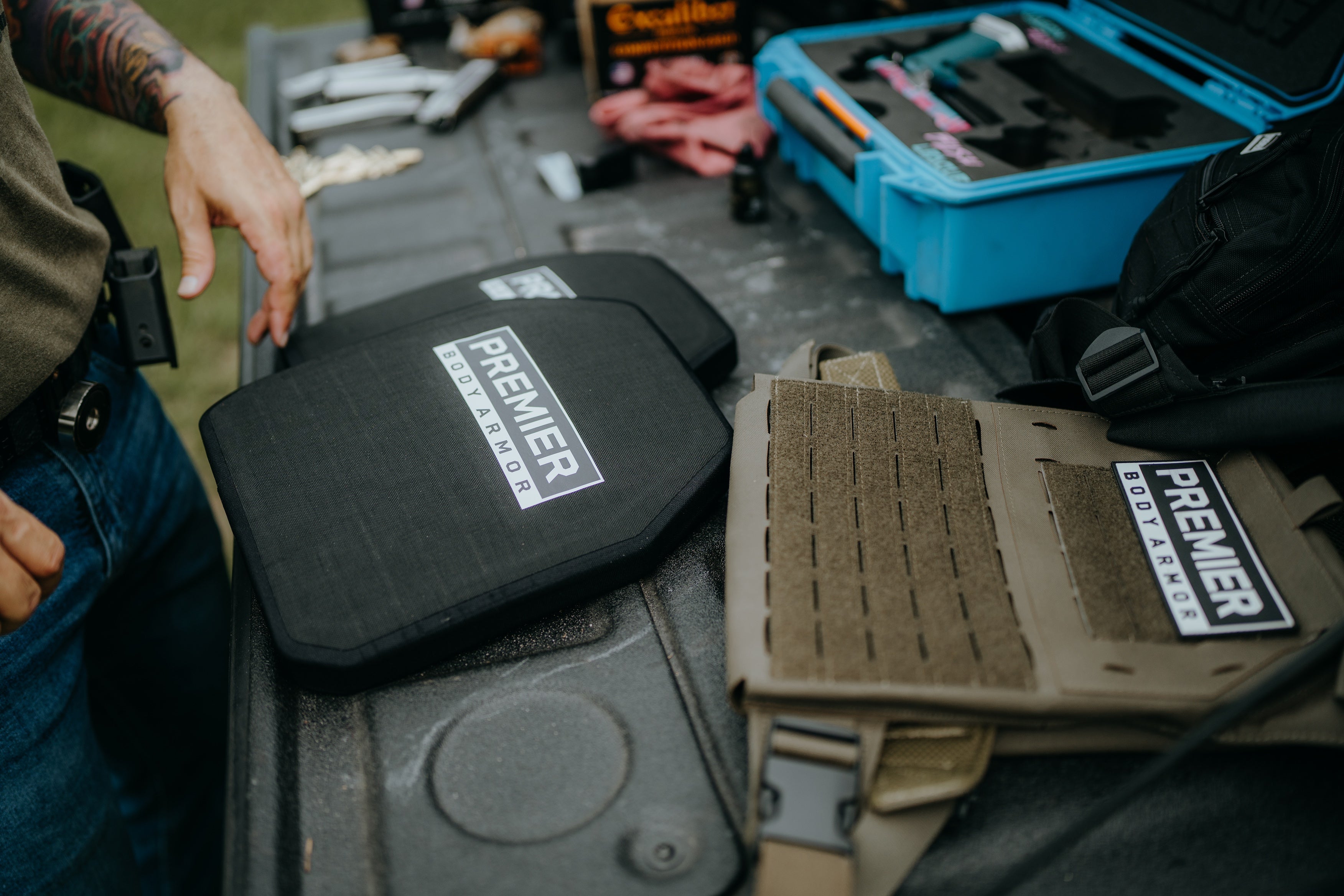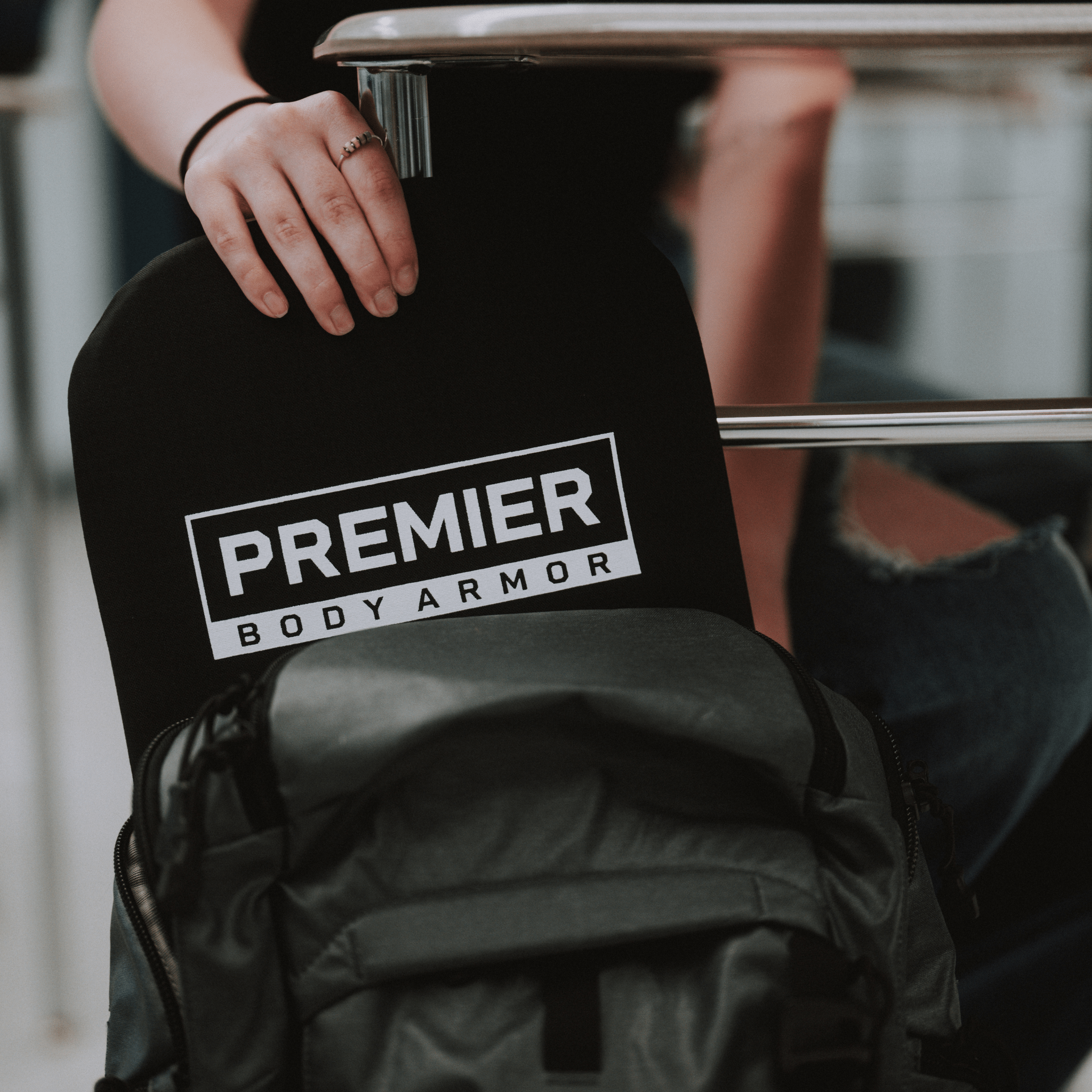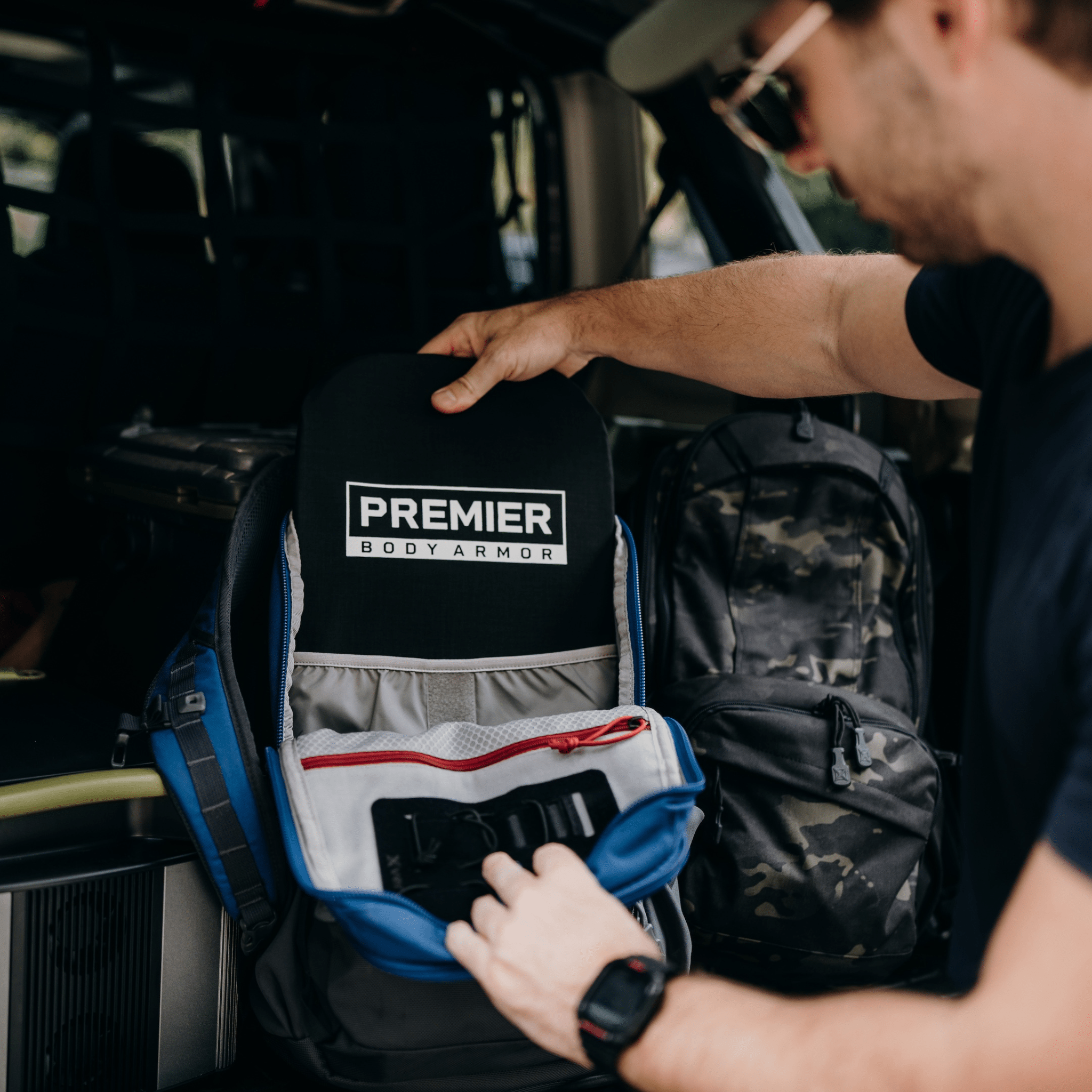A Layperson’s Guide to Body Armor
I’m not in law enforcement or in the military. My job does not require any kind of ballistic armor (or so I’ve heard it called). As a professional writer, the greatest threat to me in the workplace is forgetting to hit “save as.”
Until recently, the idea of owning body armor never even crossed my mind. Call it naive, but I didn’t even know it was an option for the everyday person.
I know that mass shootings have sadly become almost common place. You can’t even turn on the morning news without hearing about one. But the school shooting in Uvalde, Texas hit closer to home for me than any before. I have a school age son, who is the same age as the children that lost their lives that day.
So, I began to research protective gear for him. It wasn’t long before I was completely overwhelmed and confused by all the body armor options and terms out there – “what’s the difference between a bulletproof vest and a plate carrier?” “Will all armor be effective against an AR-15?” “What is the best type of armor for school?” “What in the world is ‘level iv body armor’? “NIJ protection levels?” and so on. The questions kept coming and soon I found myself looking wide eyed at my computer screen.
So, when Premier Body Armor offered me the chance to write guest blogs on their website, one of the topics I thought would be helpful for people like me would be a blog that answered some of these questions in layperson terms.
Different Types of Body Armor
Prior to my research, my experience with body armor of any kind was the bulletproof vests seen in every police procedural show on TV (I’m kind of a fan!) But turns out there is a lot more to it. Remember, this blog is meant to be just the basics for an everyday person – a body armor 101 if you will.
I apologize in advance to anyone out there with a technical background in body armor. My terminology is more of a mother’s interpretation. So, if you’re looking for an in-depth, technical, and detailed examination of body armor here’s a blog that is probably more your style (although feel free to continue reading!)
Simplified, it turns out there are two main types of body armor – that which you wear and that which you carry. Now we’re not talking about military grade armor here. That’s another subject and one that I am not at all qualified to write about.
So, let’s look at the “wearing” type first.
Bulletproof Vest
There are several different types of bulletproof vests, each meeting different needs such as whether the vest is meant to be concealed or used in high-risk situations, such as law enforcement. They are designed to reduce and deflect the impact of a bullet, thus helping to save your life. If the bullet cannot penetrate through the vest, it cannot penetrate through your body.

Bulletproof vests are made from a variety of materials, many of which are designed to stop and encapsulate the bullet, preventing it from turning into shrapnel itself. Bulletproof vests are meant to protect your torso. We’ll come back to that in a bit. You may walk away with a nasty bruise, but you’ll walk away.
Bulletproof Plate Carrier
Plate carriers are like bulletproof vests in that they are worn to protect the torso. The big difference is that while the bulletproof vest provides protection as is, plate carriers are designed to carry inserted armor plates – the vest itself alone isn’t bulletproof. This provides a bit more versatility, as you can exchange different plate levels (more information on that in just a second) depending on the environment and threat level you face. Most plate carriers are used in military situations.

Now, for obvious reasons, bulletproof vests and plate carriers were not an option for helping protect my son at school. So next I investigated the “carrying” type of armor.
Bulletproof Backpacks and Bags
Just like the name indicates, bulletproof backpacks and bags are made to withstand a bullet in a similar manner to a bulletproof vest, you just carry it instead. Plates, just like in the vests, are inserted into the material. I did look at this as a possibility for my son. However, the good ones are expensive and when we tried out a few, we found them to be extremely heavy.
Bulletproof Inserts
Instead of wearing a bulletproof vest or carrying a full bulletproof bag, bulletproof inserts are just that – you put them in any backpack or bag and use it as protection should the need arise. One of the benefits, for me anyway, is the innate ability to move them from one bag to another.
The armored inserts are a much more affordable body armor option (although no amount of money is too much if it keeps my son from serious harm) and for a seven-year-old was a lot easier to manage in terms of weight.
So, decision made, right? Wrong! There is so much more involved. In addition to the different types of body armor, there are also different types of body armor plates (a.k.a. the proof in bulletproof).
Soft Body Armor Plates
Soft and flexible, these types of plates provide strength and protection, while remaining light and are often what is used in concealed body vests or the “carrying” type of body armor.

Hard Body Armor Plates
Just like their name, these plates are hard and not flexible, but provide the protection against threat levels. However, they are not as light as soft armor plates as they are designed for rifle rated protection.

Oh no! More questions. More research!
Can an AR-15 Rifle Penetrate Bulletproof Body Armor?
For a parent, myself included, this is a likely question to ask. And the answer isn’t exactly clear. Rifle rounds can penetrate soft body armor. For reference, most police officers wear soft body armor vests, which are meant to withstand a bullet from a handgun.
Hard body armor is meant to protect against the more powerful weapons, but when it comes to armor piercing rounds, military grade armor is really the only option and for most school kids and their parents, this is not realistic.
Yet, Premier Body does offer a rifle-rated hard armor backpack plate to protect against rounds from an AR-15. Weighing in at 4lbs, this is a viable option for backpacks and relative to the weight of a textbook. However, that does not mean that soft body armor options aren’t an effective level of protection.

So, this is when I discovered NIJ ratings.
What are NIJ Ratings?
The National Institute of Justice (NIJ) has designated five rating levels given to body armor depending on the armor’s ability to withstand increasingly higher velocities of impact. For the purposes of this blog (and my own research) I looked at the most commonly used three levels.
Level IIIA Body Armor
This level is the highest level given to soft body armor. Level IIIA body armor is a flexible, lightweight option that still provides protection. Most seen in concealed bulletproof vests and backpack armor inserts, Level IIIA body armor is designed to withstand lower caliber weapons such as handguns. For reference, most on-duty police officers choose to wear vests that are rated level IIIA.
Level III Body Armor
This is the level that begins to transition to hard body armor and is the first level rated to withstand rifle-type weapons. Level III body armor does not stop armor piercing rounds (like green tip), but it does stop rounds such as 5.56 or 7.62. This is the most common use of protection from an AR-15.
Level IV Body Armor
This is the highest rated level and is worn by the US Military in combat environments. Level IV body armor is distinguished in it’s ability to stop armor piercing rounds.
In my “full on anxiety mom brain,” schools seem like combat environments these days. However, sending my son to school in military grade armor just isn’t going to work. In the end, comfort and function won out for me. If my seven-year-old can’t carry his own backpack because it’s too heavy or it proves to be too cumbersome or impacts his mobility in the event of an actual incident, how much benefit is derived?
Why is Bulletproof Protection Only for the Torso?
You don’t need a degree in biology to know that there is a lot more to the human body than the torso area. So, why is most bulletproof protective gear meant to protect that one area of the body? The majority of gunmen will shoot for the largest mass and that is your torso. That is also where most of your vital organs are located, so it’s important to protect the area.

A wound to the leg could be fatal, however it is not as likely. Now what about the head? Well, I must admit this is where my research stopped. I knew it was not conceivable to send my son to school wearing a bulletproof helmet and quite frankly, after hours of researching bulletproof this and that and thinking about school shootings, I was done and exhausted.
Which led to my decision to purchase backpack armor that fit seamlessly into my son’s backpack. This was a lightweight and flexible option for him to have a bulletproof backpack in any bag, all he had to do was add the insert to any bag he wanted to carry. Now, it is a taxing and difficult conversation to talk to my child about school shootings. We discussed him using his backpack as an armored shield to cover his vital organs in his torso and also his head.
Which in turn, eased my child’s stress about school shootings and left him feeling like a superhero with his armored insert. You can read more about starting the conversation about school shootings with my son in the blog: “How I Talked to My Child About School Shootings.”
So, that’s a layperson’s guide to body armor. Obviously, there is a lot more information out there and it’s worth spending some time with Google on your own.
I had no idea just how much went into bulletproof body armor. Now I do and I hope I never have to use any of it. But there’s something to be said for peace of mind.
Guest Blogger: Emily Johnson










This is a great article for the beginner. There are tons of Information out there and it is hard to know where to start. Once you start understanding the verbiage and you understand what purpose it will be used for, then you will have a great place to start. Don’t get overwhelmed, just stay focused and keep learning.
Leave a comment